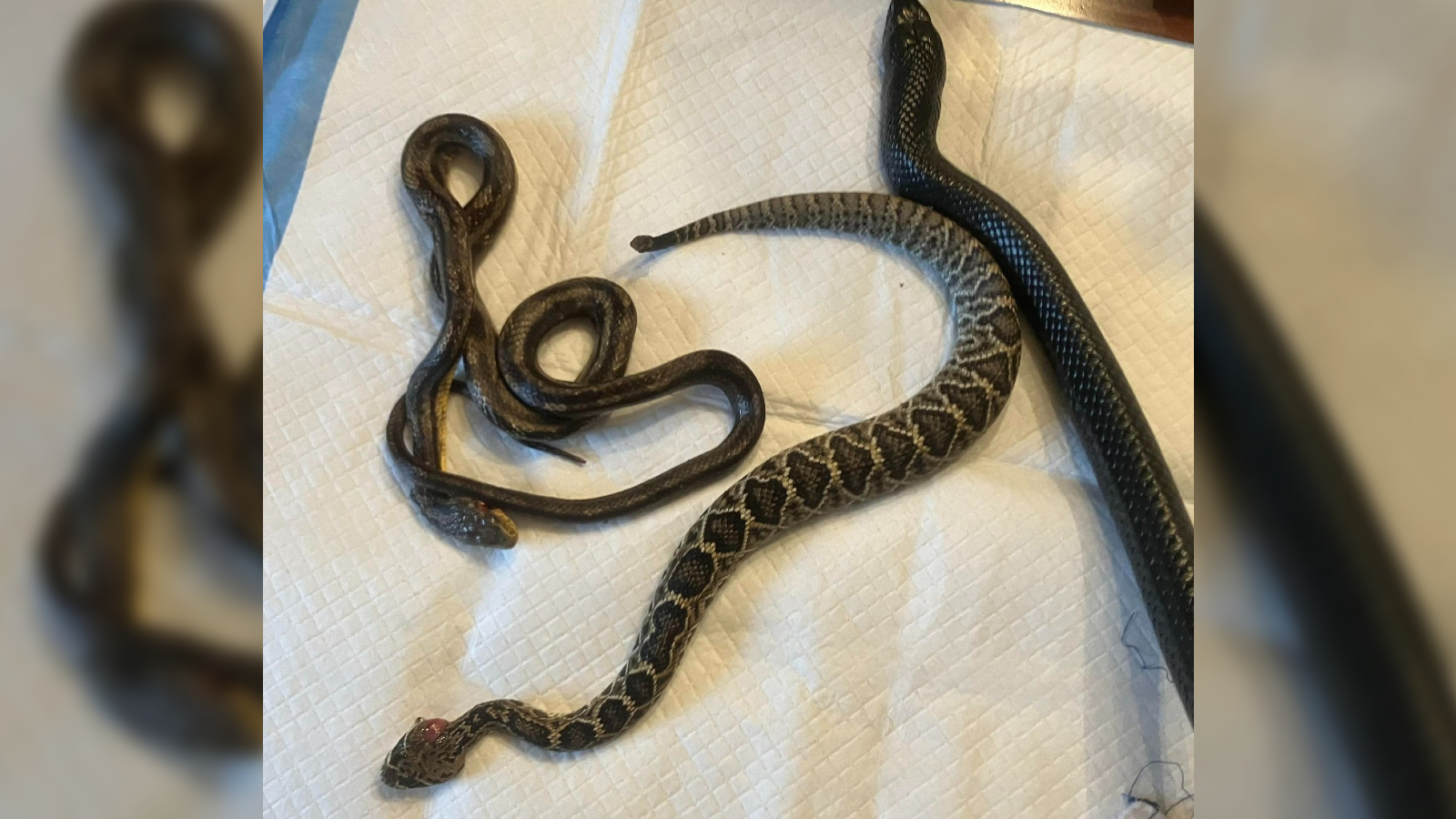4-foot snake vomits up 2 smaller snakes — and 1 was still alive
Wildlife officials in Georgia stumbled across a pair of snakes that had been "expelled" by a larger serpent, only to discover that one of the regurgitated victims was still alive.

When wildlife officials in Georgia stumbled upon a pair of seemingly lifeless snakes that had been vomited up by another, larger snake, they were already surprised by what they had found. But things took an even weirder twist when one of the regurgitated serpents suddenly woke up and slithered off.
Wildlife technicians from Georgia's Department of Natural Resources (DNR) came across the unusual scene in November 2023 while surveying federally protected eastern indigo snakes (Drymarchon couperi) in southern Georgia, according to a DNR Facebook post written on Aug. 29.
The team found a live 4-foot-long (1.2 meters) indigo snake alongside two other snakes — a "young rat snake" and a juvenile eastern diamondback rattlesnake (Crotalus adamanteus) — that had both "clearly [been] swallowed and then expelled" by the larger snake, DNR representatives wrote.
Related: The biggest snake in the world (and 10 other giant serpents)
While the rat snake did not survive being eaten, the regurgitated rattlesnake eventually showed signs of life around an hour after it was found, and it didn't seem to be particularly bothered by the ordeal. "It was later seen basking in the sun instead of taking shelter in a burrow," DNR representatives wrote.
If that wasn't odd enough, the wildlife experts soon realized that the rattlesnake also had a large bulge in its midsection, suggesting it had recently swallowed a mouse whole.
"This unusual episode not only reveals the indigo's impressive hunting abilities but also the rattlesnake's unexpected resilience," DNR representatives wrote.
Get the world’s most fascinating discoveries delivered straight to your inbox.

Snakes eating one another whole is nothing new, and the size of the meal is rarely an obstacle.
For example, in June 2022, a Georgia resident filmed an eastern kingsnake (Lampropeltis getula) slowly eating a much larger timber rattlesnake (Crotalus horridus). A study released in August this year also documented an incident where a Burmese python (Python bivittatus) swallowed a larger reticulated python (Malayopython reticulatus) from the tail up.
However, eating such massive prey also comes with risks, such as choking.
In February 2022, a rim rock crowned snake (Tantilla oolitica) was found dead in Florida after choking on a centipede, which was still lodged in its mouth when it was discovered. And in September last year, a herpetologist in France stepped in to save a viperine snake (Natrix maura) that was choking on an invasive fish.
In the recent case, the indigo snake may have been trying to avoid a similar fate when it expelled its two victims. However, it is also possible that it voluntarily surrendered its meal to escape a predator or because it was stressed out by the nearby wildlife experts looking for it.

Harry is a U.K.-based senior staff writer at Live Science. He studied marine biology at the University of Exeter before training to become a journalist. He covers a wide range of topics including space exploration, planetary science, space weather, climate change, animal behavior and paleontology. His recent work on the solar maximum won "best space submission" at the 2024 Aerospace Media Awards and was shortlisted in the "top scoop" category at the NCTJ Awards for Excellence in 2023. He also writes Live Science's weekly Earth from space series.


